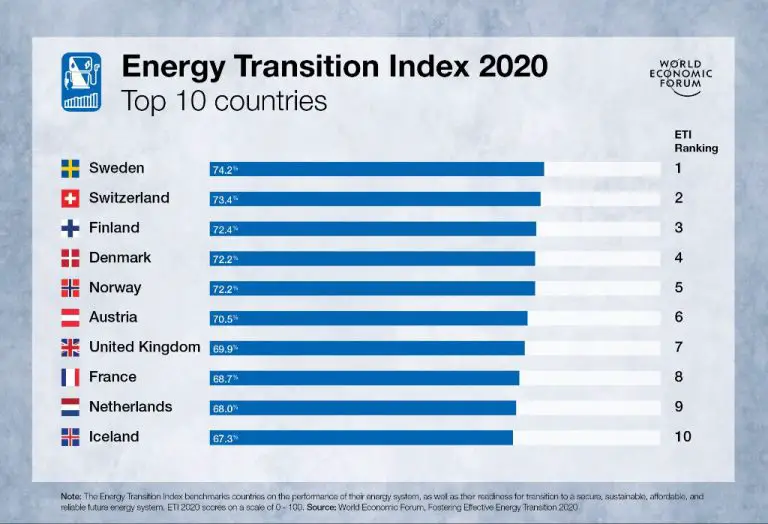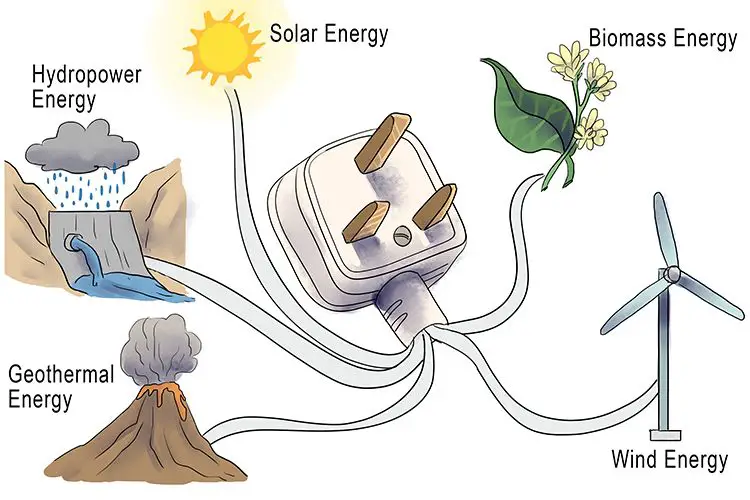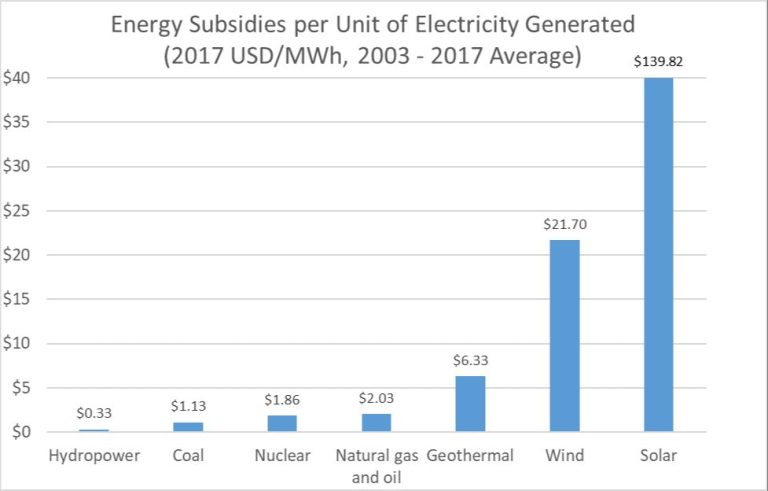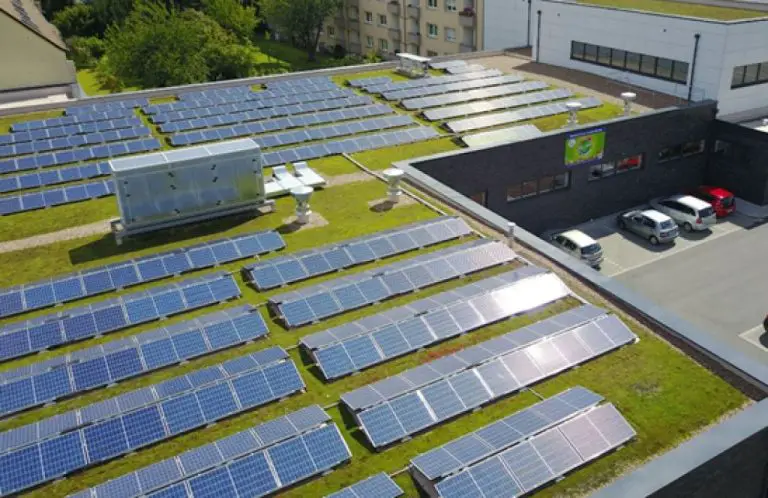What Is The Cheapest Source Of Energy In The Us?
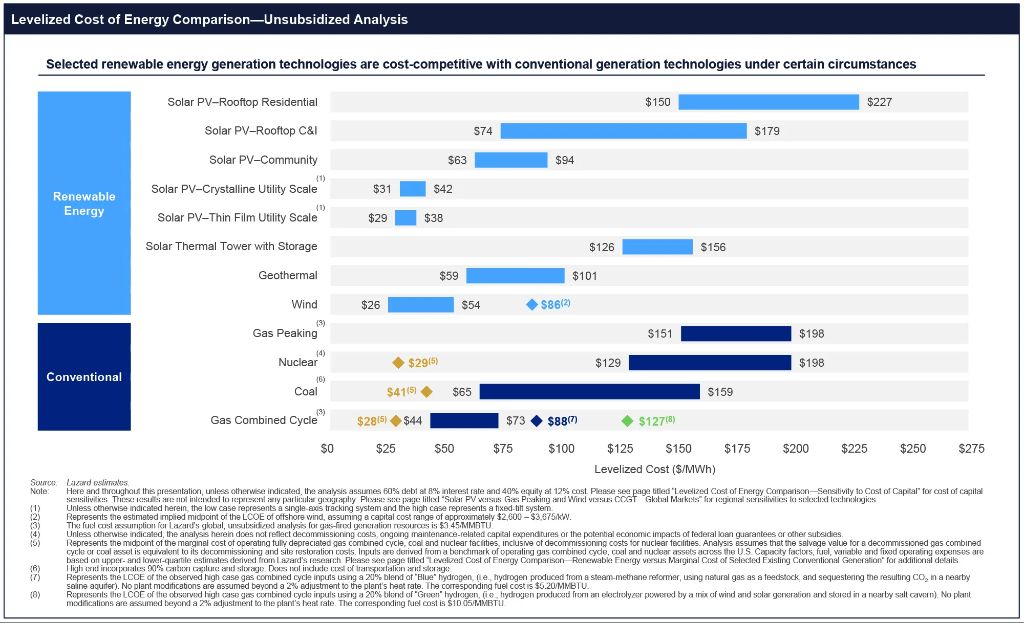
The cost of energy is an important consideration when evaluating different sources of electricity generation. With rising energy costs and efforts to decarbonize electricity production, there is interest in determining the cheapest sources of energy in the United States.
This article will provide an overview of the costs associated with major energy sources used for electricity generation, including coal, natural gas, nuclear, and renewables like solar and wind. It will compare the levelized cost of energy from these sources, which accounts for all costs over the lifetime of a generating asset. Factors beyond just levelized cost that impact the overall competitiveness of energy sources will also be discussed.
Determining the cheapest sources of energy allows consumers, utilities, and policymakers to make informed decisions about electricity generation investments and strategy. Understanding the cost dynamics around energy sources is key to providing affordable and reliable power to society in a sustainable manner.
Measuring Cost of Energy
There are several factors that contribute to the total cost of energy from different sources. These include:
- Capital costs – The upfront investment required to build and construct the energy facility.
- Fuel costs – The ongoing cost of the fuel inputs, like coal, natural gas, uranium, etc.
- Fixed operations and maintenance costs – The costs to operate and maintain the facility that do not vary with usage, like staffing.
- Variable operations and maintenance costs – The costs that vary with the amount of electricity generated, like consumables.
- Financing costs – The cost of debt and equity financing to build the facility.
To compare different energy sources consistently, analysts use a metric called the levelized cost of energy (LCOE). The LCOE aims to capture all the lifetime costs and divides it by the total lifetime electricity production. This gives a dollar per megawatt-hour ($/MWh) cost that can be directly compared across technologies. The key factors in LCOE are the capital cost, capacity factor, fuel costs, finance rate, and operating life of the facility [1]. LCOE provides a more complete picture of total costs than just looking at fuel prices or construction expenses alone.
However, LCOE does have some limitations. It does not fully capture integration costs, grid connection expenses, or environmental externalities. But overall, LCOE offers a standardized and robust way to compare the economic competitiveness of various energy sources.
[1] https://www.eia.gov/outlooks/aeo/pdf/electricity_generation.pdf
Coal
Coal is a fossil fuel that has historically been a major energy source for electricity generation in the United States. In 2020, coal accounted for 19% of total U.S. electricity generation, down from 48% in 2008.[1] There are four major types of coal mined in the U.S.: anthracite, bituminous, subbituminous, and lignite. Bituminous coal accounts for over half of U.S. coal production.[2]
The levelized cost of electricity (LCOE) from new coal plants is higher than natural gas and renewables. According to EIA projections, the estimated LCOE of conventional coal in 2023 is $70.30/MWh, compared to $44.10/MWh for natural gas and $37.60/MWh for wind.[3] However, existing coal plants, which are already built and paid for, have much lower operating costs. So while coal is becoming less competitive for new electricity generation, existing coal plants continue to produce power at low cost.
Natural Gas
Natural gas is a fossil fuel that is found underground and extracted through drilling. It is used to generate electricity, provide heating, and serve as a transportation fuel. Natural gas has become an increasingly popular energy source in the United States due to hydraulic fracturing (“fracking”) techniques that have unlocked significant new natural gas reserves.
According to the U.S. Energy Information Administration, the estimated levelized cost of electricity from a new natural gas power plant entering service in 2022 is $44.60 per megawatt-hour (MWh) [1]. This factors in capital costs to build the plant, fuel costs, fixed and variable operations and maintenance costs, financing costs, and an assumed utilization rate. It does not incorporate policy factors like subsidies or taxes.
Compared to other fossil fuel sources like coal and petroleum, natural gas has a relatively low levelized cost. It is also cost competitive with many renewable energy sources. The abundance of natural gas reserves from fracking has helped lower its price and make it an attractive option for power generation in the U.S.
Nuclear
Nuclear power plants use the heat generated from nuclear fission in a contained environment to convert water to steam, which powers turbines to generate electricity. Nuclear power provides about 20% of electricity in the United States. There are currently 94 licensed nuclear reactors operating at 56 nuclear power plants in the country.
According to the U.S. Energy Information Administration (EIA), the estimated levelized cost of electricity (LCOE) from new nuclear power plants entering service in 2027 is $96.10 per megawatt-hour (MWh). This is projected to decrease to $93.80/MWh by 2040 due to assumed technology improvements that lower costs.
The EIA analysis accounts for capital costs to build the plant, fuel costs, fixed and variable operations and maintenance costs, financing costs, and utilization rates. Nuclear has relatively low fuel costs but high capital costs. The projected costs make nuclear less competitive than natural gas and coal generation options.
Sources:
EIA – Projected Costs of Generating Electricity 2020
Statista – U.S. nuclear power plants LCOE 2027-2040
Renewables
The main renewable energy sources in the US are solar, wind, hydroelectric, and geothermal. According to the Energy Information Administration, the estimated levelized cost of energy from onshore wind in 2023 is $36/MWh, utility-scale solar PV is $37/MWh, hydropower is $39/MWh, and geothermal is $40/MWh.1 Renewable energy sources have become increasingly cost-competitive with conventional sources. The levelized costs for solar and wind have dropped dramatically in the past decade due to technology improvements and economies of scale. Hydroelectric and geothermal also provide low-cost renewable energy, but their potential for growth is limited by suitable geography and natural resources.
Comparing Costs
When comparing the levelized costs of different energy sources in the U.S., several key trends emerge. According to the U.S. Energy Information Administration (EIA), the estimated levelized cost of conventional coal is $65 per megawatt hour (MWh) in 2023, making it one of the cheapest sources of electricity generation [1]. Natural gas combined cycle plants are even more economical at $44/MWh, while advanced nuclear clocks in at $74/MWh. Renewable sources like solar and onshore wind are becoming increasingly competitive as well, with costs estimated at $37/MWh and $41/MWh respectively in 2023.
Coal and natural gas benefit from being mature, widely available technologies that can generate baseload power reliably. Nuclear also provides steady baseload capacity, but has high upfront capital costs. Meanwhile, renewables like wind and solar boast low operational costs but provide intermittent generation. Comparing levelized costs provides a standardized way to weigh these pros and cons for different energy sources.
The Cheapest Source
Based on levelized costs, the cheapest source of electricity in the US is onshore wind power. According to Lazard’s 2023 analysis, the unsubsidized levelized cost of energy (LCOE) for onshore wind is $26-50 per MWh, making it the most affordable source for generating electricity (https://decarbonization.visualcapitalist.com/the-cheapest-sources-of-electricity-in-the-us/). The next cheapest sources are utility-scale solar at $32-44 per MWh and combined cycle gas turbines at $44-68 per MWh. Onshore wind’s low costs are due to improvements in turbine technology that have increased efficiency and capacity factors. Overall, renewables like wind and solar have become very cost-competitive with fossil fuels for power generation.
Other Factors
There are other important factors beyond cost that affect the choice of energy sources, such as environmental impacts. Fossil fuels like coal and natural gas produce greenhouse gases when burned, contributing to climate change. According to the World101 article “Sources of Energy: A Comparison”, burning coal emits almost double the CO2 per unit of energy compared to natural gas. Renewable sources like solar, wind, and hydropower do not directly emit greenhouse gases and are considered more environmentally friendly. However, they can have other impacts, like wind turbines affecting birds or dams flooding areas for hydropower. Nuclear power does not emit greenhouse gases but produces radioactive waste that must be safely stored. The environmental advantages and disadvantages of each energy source should be weighed when making decisions.
Energy security and independence is another factor, with domestic energy sources preferred to relying heavily on imported fuels according to the CFR article. Some countries lack certain resources, making them dependent on imports. Disruptions in supply of imported energy can have major economic and political impacts. Using more diverse domestic sources provides greater energy security.
Public opinion and politics also play a role. Public opposition to nuclear power or support for renewables shapes policy decisions on energy incentives, regulations, and investments. Energy policy can likewise drive utilization of certain sources through subsidies, taxes, or mandates. The complex interplay between public opinion, interest groups, and policymakers affects which energy sources gain favor.
Conclusion
In summary, when looking purely at economic factors, natural gas appears to be the cheapest source of energy generation in the United States at present. The levelized costs of natural gas-fired plants are estimated to be lower than coal, nuclear, and renewables including wind, solar, hydroelectric, and geothermal. This is largely due to the domestic abundance of inexpensive natural gas unlocked by hydraulic fracturing technologies over the past decade.
However, it is important to consider that cost is not the only factor that matters when evaluating energy sources. There are also environmental impacts, capacity factors, storage and transmission costs, and energy security issues to weigh. But in terms of cheapest cost per megawatt-hour, natural gas produced by fracking currently provides the most affordable power in America from a direct economic perspective.

